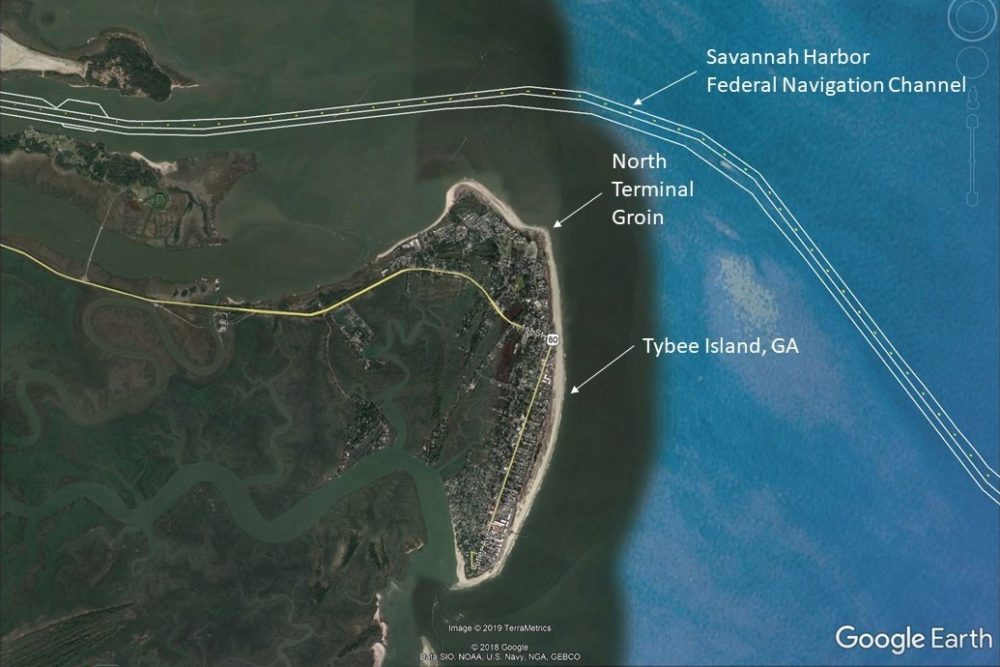The goal of this study was to understand the impact of vessel traffic patterns and associated boat wakes generated by large commercial vessels on Tybee Island.
Project Lead: US Army Corps of Engineers
Funding: $175,000 from USACE, $175,000 from Georgia Department of Community Affairs
Partners: USACE, Georgia Department of Community Affairs
Project Summary: The federally maintained navigation channel, Savannah Harbor, sits less than one nautical mile north of the island and provides a transportation route for commercial vessels across the ocean bar and up the Savannah River to the Georgia Ports Authority Garden City Terminal. This terminal is the 4th busiest container handling facility in the nation and as such, the navigation channel is frequently utilized by very large deep draft, container ships.
On the northern end of Tybee Island, known locally as the Savannah River side, there are powerful waves caused by large commercial ships transiting the harbor that are impacting the shoreline and pose a hazard to those swimming/wading in the water. There have been numerous reports of these wave events from Tybee residents and visitors that detail occurrences of receding water followed by a sudden surge with currents strong enough to topple those swimming and wading in the area. There is also a concern that this wave effect is increasing erosion rates of Savannah River shoreline and could potentially impact property and infrastructure to include the federal beach project. In this study, conducted by the US Army Corps of Engineers, vessel operations and environmental conditions were monitored between late July and early December 2021. Factors measured included size, speed, type, and heading of each ship, the types of waves created by those ships, and tidal currents were observed.
Project Goals:
- To better understand how ship induced waves affect the north end of Tybee Island.
- To quantify the location, magnitude, and duration of ship induced waves.
- To quantify the impacts to erosion rates on the north end of the island and the potential for impacts to property and infrastructure, to include the federal beach renourishment project.

